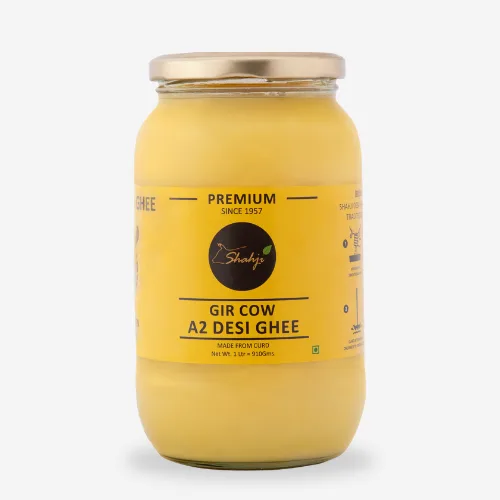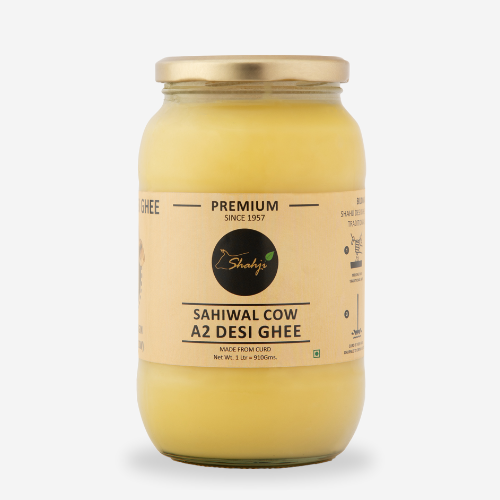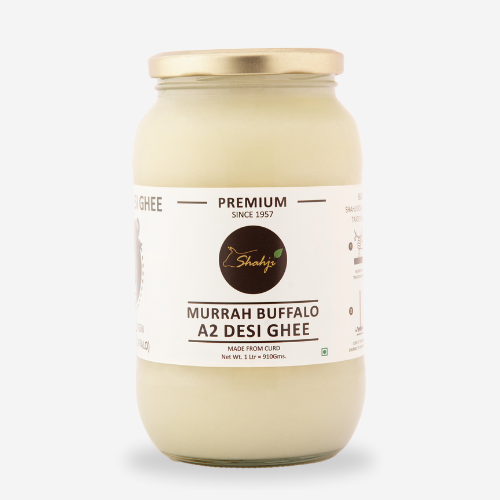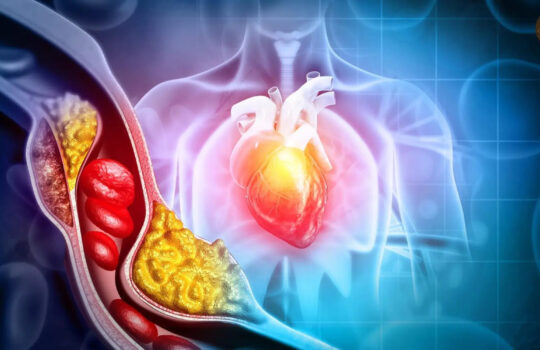7 Best Difference Between Paneer and Cheese (You Should Know)
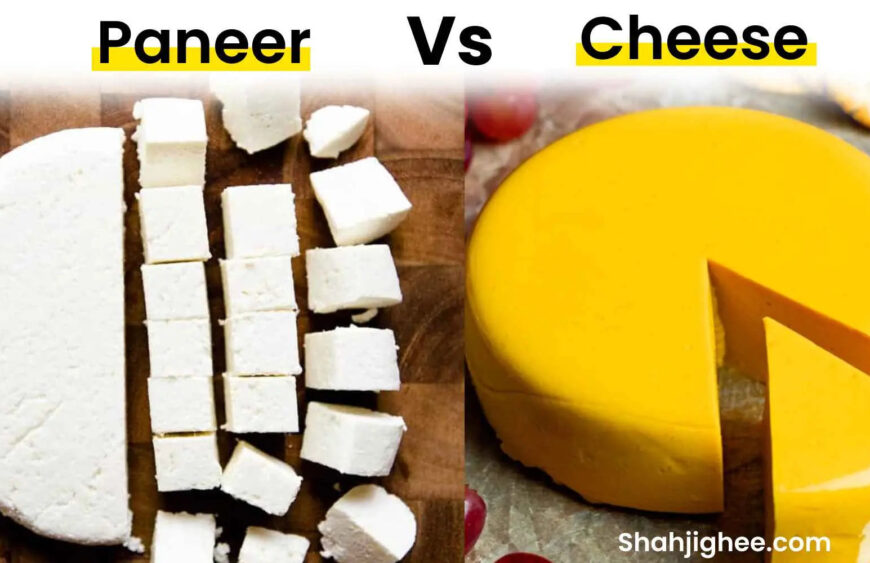
Cheese and paneer are both dairy-based products, but there are significant differences between the two. In this article, we will discuss the difference between Paneer and cheese.
What is Cheese?
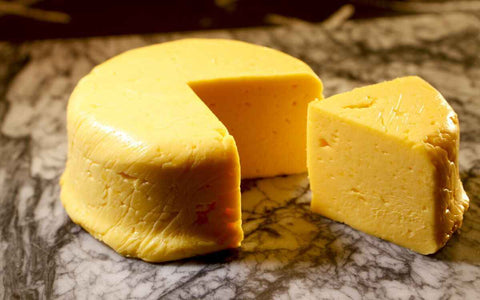
Cheese is a dairy product produced by the acidification process. Acidification is caused by bacteria (rennet) in milk, which gives it its distinct texture and flavor. Hundreds of different types of cheese are produced in various countries. They come in a variety of styles, textures, and flavors.
Variation In Cheese
These variations are caused by factors such as milk origin, processing, butterfat content, bacteria and mould, cheese aging, and so on. Aromatic moulds can be found on the rind, outer layer, or throughout the cheese. When heated to cooking temperature, most cheeses melt. Cheesemakers flavor their products with herbs, spices, and wood smoke. Other ingredients, such as garlic, black pepper, and chives, are occasionally added to the cheese. Popular cheese recipes include cheese pizza, cheese pasta, garlic cheese bombs, and cheese fondue.
It can be made from milk from cows, goats, sheep, or even water buffalo, and is available in a wide variety of forms, from fresh, soft, spreadable cheeses, to hard, aged cheeses. Cheese is a versatile food that can be eaten on its own, added to dishes, melted, or used in sauces and dishes.
Nutritional Composition Of Cheese
Cheese has a high fat, protein, phosphorus, and calcium content and long shelf life. Cheese is divided into two categories: hard cheese and soft cheese. Hard cheeses include Pecorino, Parmesan, Pepato, and Romano, while soft cheeses include feta, Brie, ricotta, Camembert, and Chevre.
What Is Paneer?
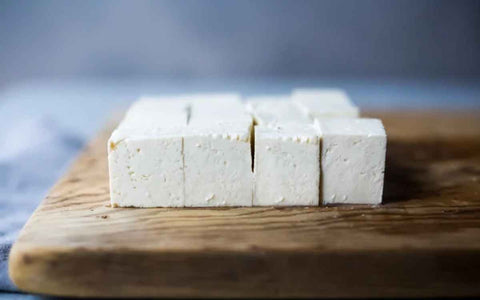
Paneer is a fresh, soft, unaged cheese that has only been slightly treated with enzymes. It is made from milk that has been curdled and heated. The curd is then drained, pressed, and molded into blocks or cubes. Paneer has a mild, milky flavor and a firm, dense texture and is often used in Indian and Pakistani dishes. It is also popular in other parts of the world as a vegetarian alternative to meat.
It can be taken with a meal or snacks. Some popular Indian recipes include paneer pulao (paneer with rice), mattar paneer (paneer with peas), palak paneer (paneer with spinach), paneer pakora (paneer fritters), kadai paneer, and paneer tikka.
Also Read
- What is A2 desi ghee? & why it is better than normal ghee?
- Cow ghee vs Buffalo ghee: Which is better?
How To Make Paneer?
We can make paneer easily at home. You only need whole milk, cheesecloth, lemon juice, or another food acid. To separate the curds from the whey, first, add the food acid to the hot milk. The curds are drained into cheesecloth, and any excess water is discarded. The paneer must then be immersed in cold water for 2–3 hours to improve its appearance and texture.
Steps to make paneer at home
- Take whole milk, cheesecloth, and lemon juice. You can take any fruit acid.
- Heat the milk at 70-80 degrees Celsius.
- Add 4 to 5 drops of lemon juice, or add 2 or 3 spoonfuls of chhachh (Lassi) to it.
- After adding lemon juice, this will leads to curd formation.
- Leave it overnight undisturbed.
- In the morning you will see curd, now take cheesecloth and drained all the water by squeezing it.
- Now squizzed it in your desired shaped blocks, and fridge it.
- Your Paneer is ready to serve or for selling.
Difference Between Paneer and Cheese – Detailed Comparison Table
Comparison criteria |
Cheese |
Paneer |
| Definition | Cheese is a dairy product made from milk that has been curdled, separated, and then treated with enzymes to create a variety of textures and flavors. | Paneer is a fresh, soft, unaged cheese that has only been slightly treated with enzymes. |
| Hard vs. Soft | Two types of cheese hard and soft cheese | Paneer is soft cheese |
| Nutrient Content | Cheese has high fat, protein, phosphorus, and calcium contents. | Comparatively low nutritional content |
Aging | Aged | No aged |
| Shelf Life | Longer shelf life | Short shelf life |
| Emulsification | Emulsification is used in the making | No emulsification is used in making |
| Recipe | Popular cheese recipes include cheese pizza, cheese pasta, garlic cheese bombs, and cheese fondue. | Popular paneer recipes include shahi paneer, mattar paneer, paneer tikka, and kadai paneer. |
Overall, cheese and paneer are two distinct dairy-based products with distinct characteristics and applications. Cheese is aged and has a variety of textures and flavors, while paneer is fresh and has a mild, milky flavor and a firm, dense texture. Cheese is a versatile ingredient, and paneer is primarily used in Indian and Pakistani dishes as a vegetarian alternative to meat.
Frequently Asked Questions – FAQs
What is paneer?
Paneer is a fresh, soft, unaged cheese that has only been slightly treated with enzymes.
What is cheese?
Cheese is a dairy product produced by the acidification process. Acidification is caused by bacteria (rennet) in milk, which gives it its distinct texture and flavor
Can we use paneer as cheese?
Yes, paneer can be used as a cheese substitute. It is a fresh cheese that is popular in Indian cuisine and is made from curdled milk.
Which is better, cheese or paneer?
Cheese is nutritious, but it contains a lot of saturated fat and cholesterol, which are bad for your heart. A 100 g serving of cheese contains 18 g of saturated fat and 100 mg of cholesterol, whereas 1.7 grams of paneer contain 17 mg of cholesterol and 1.7 g of saturated fat. As a result, paneer is a better choice.
What does paneer taste like?
Paneer is a mild-tasting cheese that has a slightly sweet and milky flavor. It has a crumbly texture and melts easily when cooked. It can be used in dishes like curries, wraps, and salads.
A2 Gir Cow Ghee
1 LTR
Add to cart now & unlock an extra 20% off!
A2 Sahiwal Cow Ghee
1 LTR
Add to cart now & unlock an extra 20% off!
Murrah Buffalo Ghee
1 Ltr
Add to cart now & unlock an extra 20% off!

